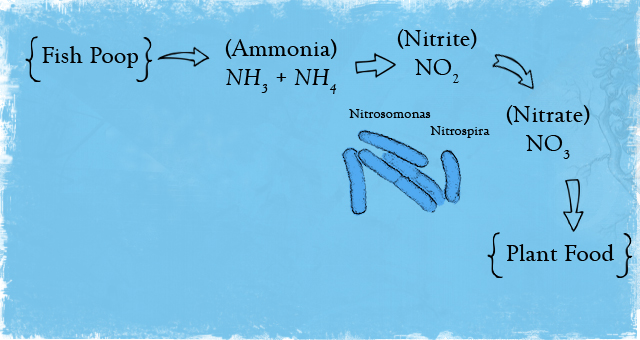The Nitrogen Cycle

The nitrogen cycle is what makes an aquaponic system possible. The cycle is maintained by bacteria that transform the ammonia created by decomposing fish waste or organic matter, into a usable plant fertilizer. The process isn’t as complicated as you may think.
Firstly, decomposing fish food, fish waste, and other organic materials create Ammonia and Ammonium in the system.
Ammonia(NH3) + Ammonium(NH4)
Ammonia and Ammonium are converted by bacteria called Nitrosomonas into Nitrite.
Ammonia(NH3) + Ammonium(NH4) -> Nitrite (NO2)
The Nitrite is then processed by another bacteria call Nitrospira into Nitrate.
Nitrite(NO2) -> Nitrate (NO3)
Plants in the system both benefit from, and remove, nitrates in the system. This prevents toxic levels from developing in the water, and maintains fish health.
Without plants in the system, just like a fresh water aquarium, water changes need to be made frequently to eliminate nitrates.
[flv:http://www.gardenisto.com/wp-content/uploads/2012/06/VIDEO00031.flv 480 340]
Video: Black Mollies and Algae Eaters coexisting in water beneath squash plants.
Alternatively, beneficial bacteria that transform nitrates into harmless nitrogen gasses can be used in the system. Nitrogen gasses then escape through the surface of the water.